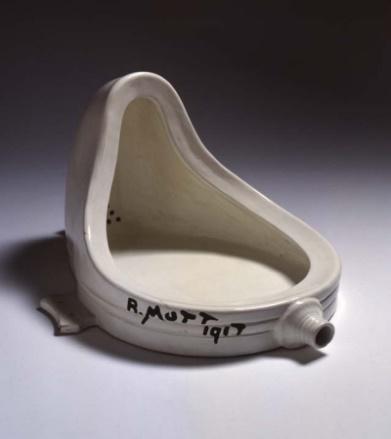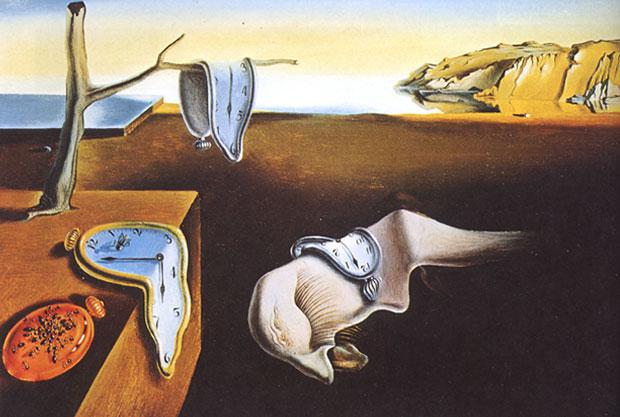Marcel Duchamp was a French artist who combined talent and everyday objects to produce meaningful art and paintings. Duchamp broke down the difference between everyday objects and art. His father was a notary, and his older brother, Jacques Villon, was a painter. Fauvism and Matisse greatly influenced Duchamp’s earlier paintings, and he later settled for a personal brand of Cubism (Dali, 2021). His brand combined visceral and mechanical forms and earthly colors. It portrayed a movement built both on Futurism and Cubism. Duchamp devised his famous ready-mades due to his conventional aesthetics irreverence.
In 1913, his Nude Descending a Staircase, No.2, 1912, caused a sensation. The ready-made pieces of art were ordinary but slightly altered everyday use objects designated by Duchamp. This artwork includes Advance of the Broken Arm, a snow shovel released in 1915, the 1913 Bicycle Wheel, and a bicycle on a wooden stool (Dali, 2021). The concept of ready-made revolutionized art since many people view it as an assault on the conventional understanding of the status and nature of art. Additionally, Duchamp used the concept as a secret symbolic language. According to him, fabricated objects made him flexible since he was not tied to a particular taste or art style.
Salvador Dali was an influential Spanish printmaker and surrealist painter who was famous for exploring subconscious imagery. Dali started displaying exceptional technical facilities and assimilated several artistic styles when he was an art student in Barcelona and Madrid (Dali, 2021). However, until the late 1920s, he began showing mature artistic styles after discovering Sigmund Freud’s compositions about the erotic importance of subconscious imagery. During this period, he was also associated with writers and artists known as the Paris Surrealists. This group emphasized creating a greater reality of subconsciousness over meaning. He began acting hallucinatory to portray the image of his subconscious mind. Dali described his hallucinatory state as paranoiac critical. His paintings depicted a dream world that was deformed, juxtaposed, and metamorphosed in an irrational and bizarre fashion. These objects were portrayed realistically and meticulously, placing them in a landscape resonant of Dali’s homeland, Catalonia. The 1931’s Persistence of Memory is perhaps Dali’s most famous artwork.
Marcel Duchamp and Salvador Dali influenced many artists, including the upcoming artists, in the 20th century. As Duchamp challenged the notion of art, Dali inaugurated a new imaginative expression generation. Although they were viewed as opposites in every aspect, their lives and artistic styles resembled. It can be seen on many levels in their respective pieces of artwork (Dali, 2021). Although Duchamp was a quiet character and Dali a self-proclaimed genius, they were committed to individual freedom. The two artists disputed conventional views of life and art through skepticism and humor and pioneered found objects in artwork.
The Fountain remains the most famous piece of art produced by Duchamp. Although it faced a lot of criticism and debate, Duchamp invented a conceptual piece of art that disconnected the association between the supposed merit of work and an artist’s labor. Many argue that Duchamp discredited the authority and position of virtuoso artists by inverting the urinal and putting it forward as a piece of art (Dali, 2021). Having originated from a small town near World War One battlegrounds, he was also discrediting the judgemental critics in similar ways the atrocities of the battle discredited authority. The Fountain revolutionized art and posed questions such as what is art? And Who is an Artist?

Salvador Dali’s art, The Persistence of Memory, is a rare artwork that the mention of melting clocks can elaborate. The image reflects a dream experienced by Salvador Dali, and the rocks typify how people experience the passing of time in sleep. The painting has an orange clock covered by ants at the bottom, symbolizing decay (Dali, 2021). Additionally, a fly is sitting on the watch close to the orange watch. The sun hitting the fly makes it appear to be casting a human shadow. Dali applies the precision of realist artistic technique to describe imagery similar to those in dreams than consciousness.

Reference
Dali, S. (2021). “The Persistence of Memory”: The Power of Memory. In Perspectives of Power (pp. 95-104). Routledge.